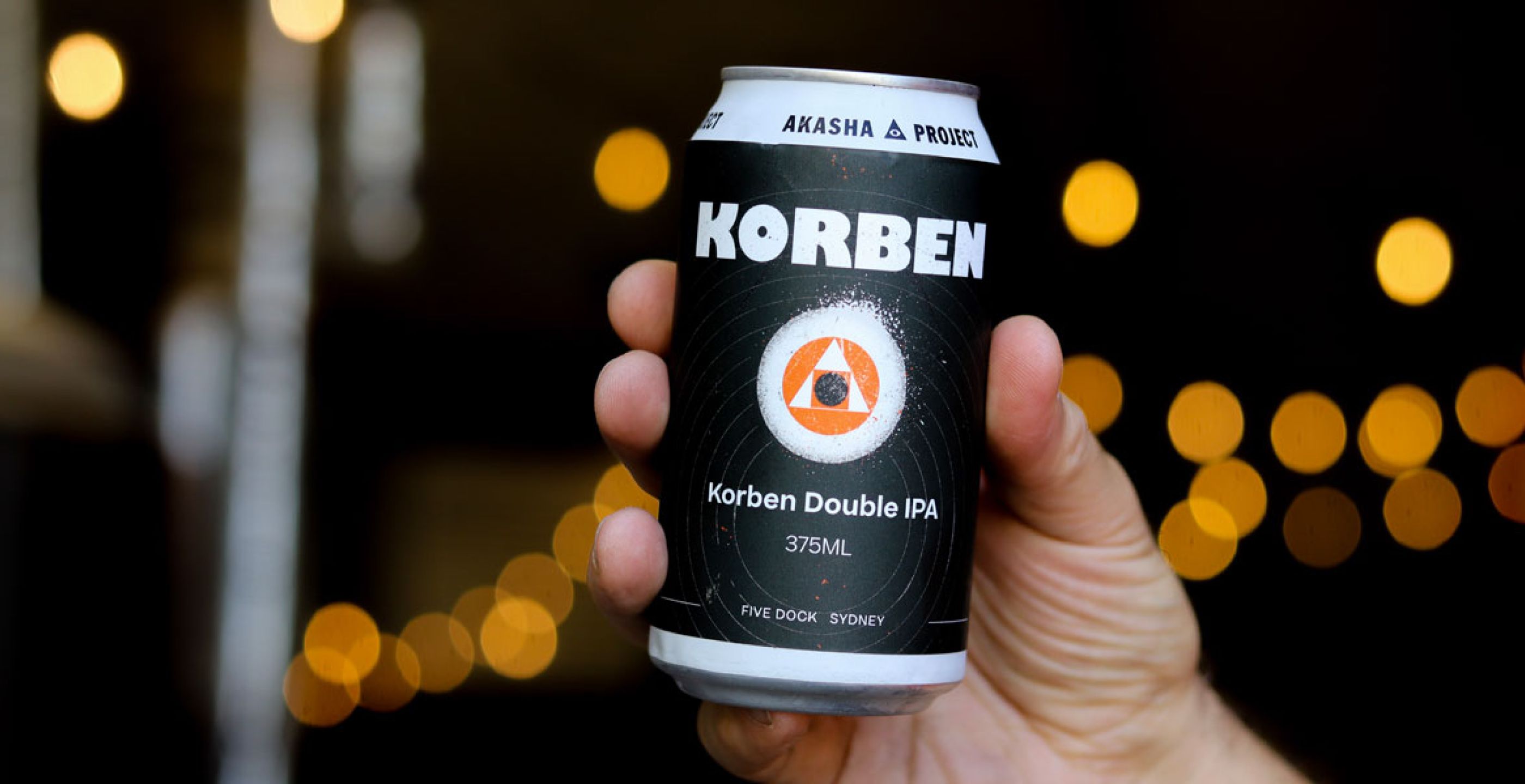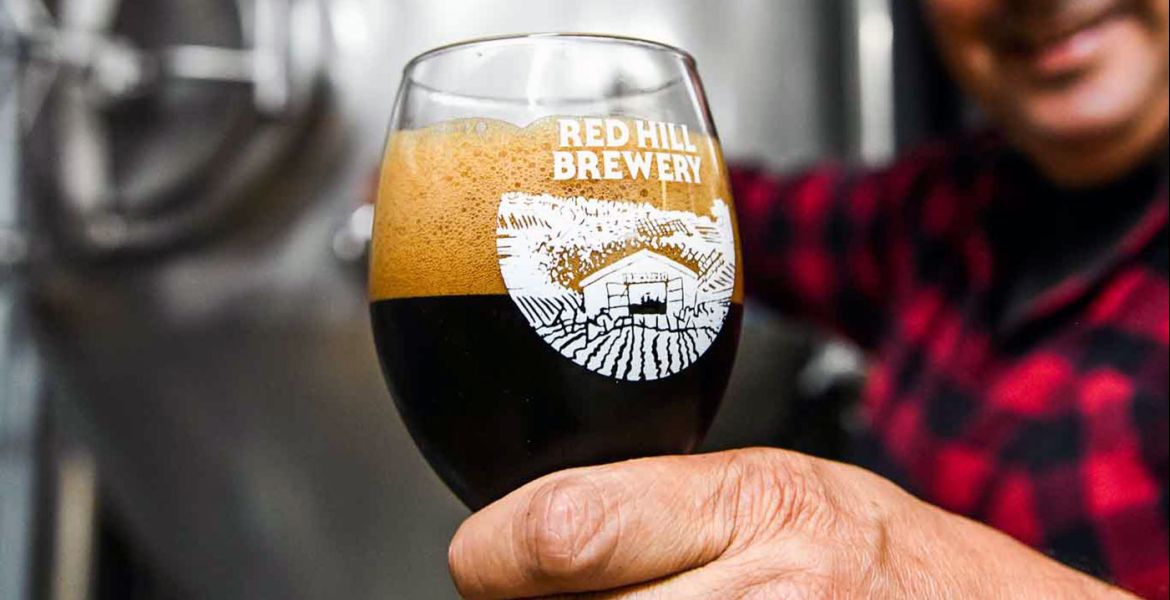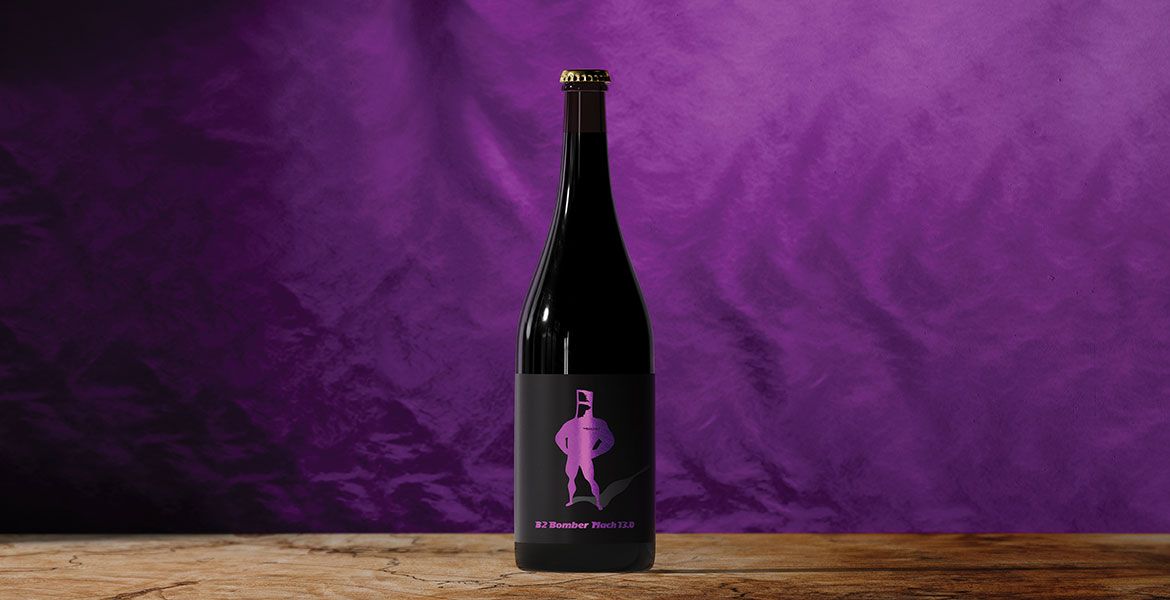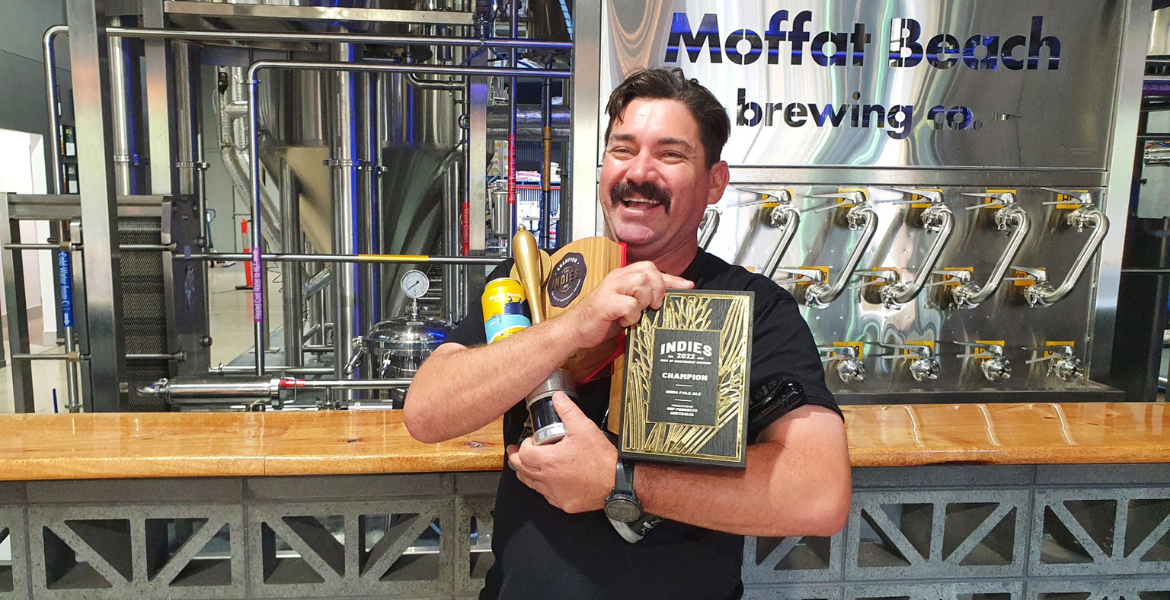The Story Of... is an occasional series on The Crafty Pint that's traditionally delved into the backstory of iconic and cult beers. It's been a while since we last ran one – and we may well expand it to include more than just beers in the future.
For now, however, the series makes a comeback with the double IPA formerly known as Korben D, a much-loved, semi-regular release from Sydney's Akasha.
Delving into its past is avowed Korben fan Judd Owen.
Late in 2015, the Sydney beer scene was abuzz with the news that the former head brewer and co-founder of Riverside Brewing, Dave Padden, had found a permanent home for his new brewing venture. Akasha had launched earlier that year with a contract-brewed pale ale, soon followed by a West Coast IPA, an American amber ale and, almost unbelievably, a lager.
For the growing group of beer obsessives on the East Coast of Australia, it means the wait for the spiritual successor to Riverside’s cult favourite 777 Imperial IPA had begun. For many, 777 was their first experience with an American style double IPA how it should be, and brewed locally. The famous American examples from Sierra Nevada, Stone and their ilk were being imported by any means necessary which typically resulted in beers hitting taste buds oxidised, devoid of hop character, stale and cloyingly sweet. For many beer lovers in Australia, that’s what we thought they were supposed to be.
Dave Padden’s love of the style, combined with extensive research and experimentation, brought West Coast IPAs from southern California to Australia in all their resiny glory. Just one month after opening the Akasha brewery and taproom in Sydney’s Five Dock, Korben D IIPA arrived, ready to pick up where 777 left off.
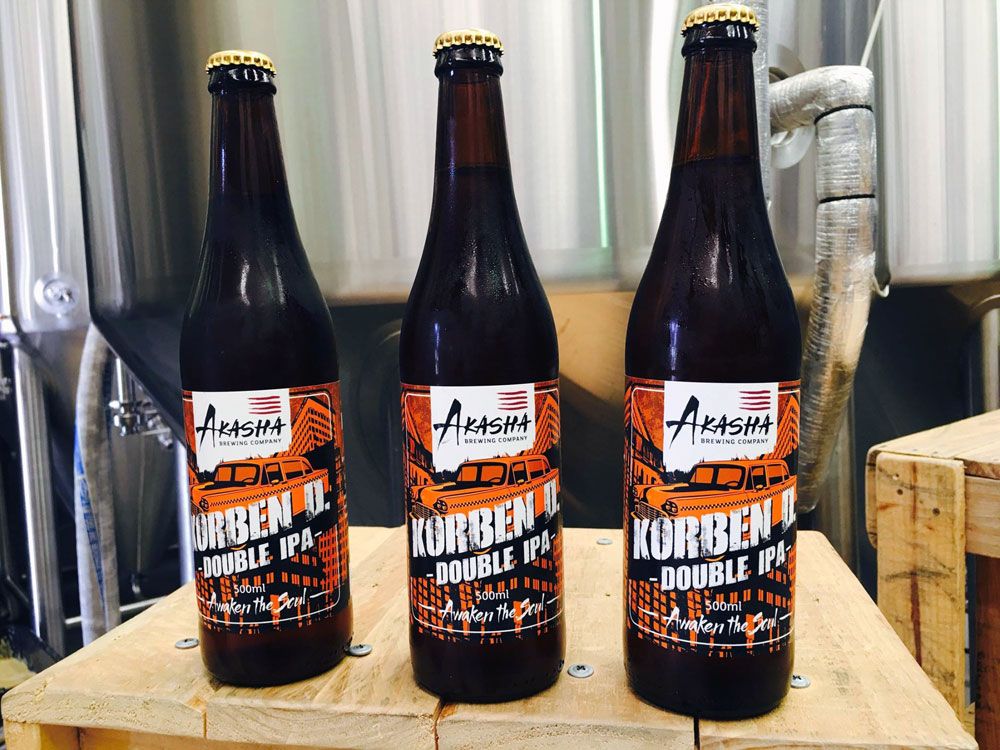
With such immediate acclaim, Korben (they later dropped the D) even managed to score Akasha’s first foray into the upper reaches of the Hottest 100 beers list with a stunning top 25 spot, joining Pirate Life’s IIPA as the most beloved DIPAs in the country.
Unlike some of its contemporaries, however, Korben has remained a much-loved and keenly-anticipated product with every batch practically sold out before release. Akasha’s strategy of three batches per year with limited stock allocated to trusted retailers means the beer will only ever be sold as fresh as Dave intended.
Akasha’s commitment to quality, balance and consistency has also seen Korben deservedly rate as one of the country's finest examples of the style and, despite the beer world's seemingly changing tastes over the past five years, it’s more popular than ever.
In order to find out the secrets behind the success, I caught up with Akasha CEO Dave Padden at the Akasha taproom to chat all things Korben and somehow didn’t make a single Fifth Element reference [You promised me you were going to fashion your own version of Milla Jojovich's Gaultier creation for the interview. How disappointing! – Editor].
Was it always your intention to make a DIPA as soon as possible after starting Akasha?
Yeah, 100 percent. When I was at Riverside and then before that when I was a homebrewer, I was always all about brewing IPAs and DIPAs. It’s always been my favourite style of beer.
When we started Akasha, we were expected to come out with an IPA and DIPA right out of the blocks. But we didn’t want to be predictable, so we led with the pale ale, which surprised everybody. Although it wasn’t part of the core, Korben came as the first seasonal very soon after opening.
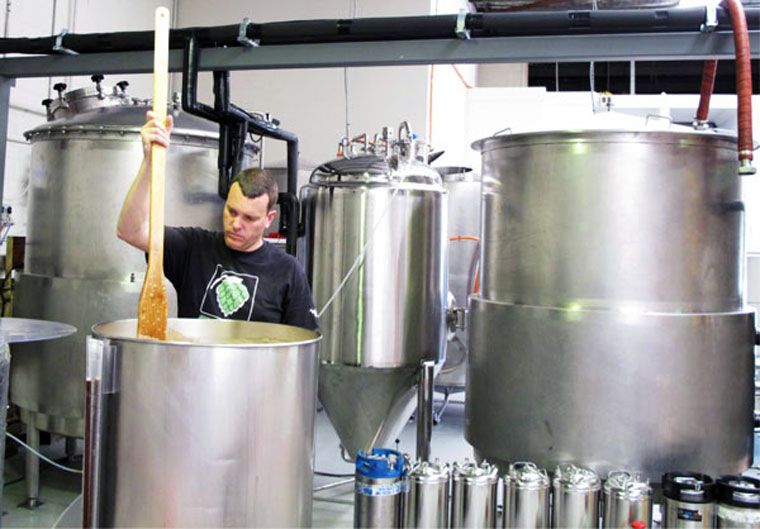
Riverside’s 777 was the first Australian DIPA I’d ever had that I thoroughly enjoyed; before 777, had you spent much time brewing DIPAs?
I was brewing them at home ten to 12 years ago and spent a lot of my time trying to create balanced IPAs around that 9 percent mark.
Like everyone else, the first DIPA I brewed was a sweet mess, of course, so I did a lot of research finding malts that didn’t become too cloying when I used a lot of them and actually convincing myself that sugar is OK when used in a DIPA. As an Australian brewer, you’re taught that sugar is only used by the big boys and that took a while to overcome. I started using dextrose which completely ferments out and dries out the beer with no residual taste.
I’ve been very fortunate to talk to Vinnie Cilurzo at Russian River quite a few times, and he still to this day makes my favourite DIPA. He said to me: “How can you make a proper American DIPA without sugar?”
With 777, it was all about making a balanced, drinkable beer with a lot of hops and a lot of malt that wasn’t sweet or terribly bitter. It was still a bit rough around the edges but that was pretty cool too.
How does Korben differ from 777?
One thing that’s always been present for me as a brewer is not to change things too much. Once we’ve released a beer to market, we really do try to keep them as similar as possible so, if you have the same beer a couple of years later, you know what you’re in for. So, in the years I was brewing 777 I was learning so much more about brewing DIPAs and a lot of those tips and tricks we couldn’t put into that beer because we didn’t want to make it too different.
DIPAs these days are so much more refined and I think a lot of that has been really dialling in the malt. Malt has always been a second thought brewing IPAs and DIPAs and, here at Akasha, for all the beers – but particularly the big ones – we’ve worked hard on perfecting the malt. So, really, one of the main differences is that the malt is completely different now compared to what it was.
Probably the other main difference is that my beers are a lot less bitter than they were ten years ago. I’d say that the IBUs are around half to two-thirds of what they used to be. That’s completely down to the palate shift that’s occurred in that time.
We aren’t using 30 or even ten minute hop [additions] anymore and there’s very little in the boil. We’re just absolutely packing everything into the whirlpool, which gives a different kind of bitterness profile. Other than that, not much has changed. They’re really not horribly complex beers, you can’t change them too much otherwise you don’t have a West Coast DIPA anymore.
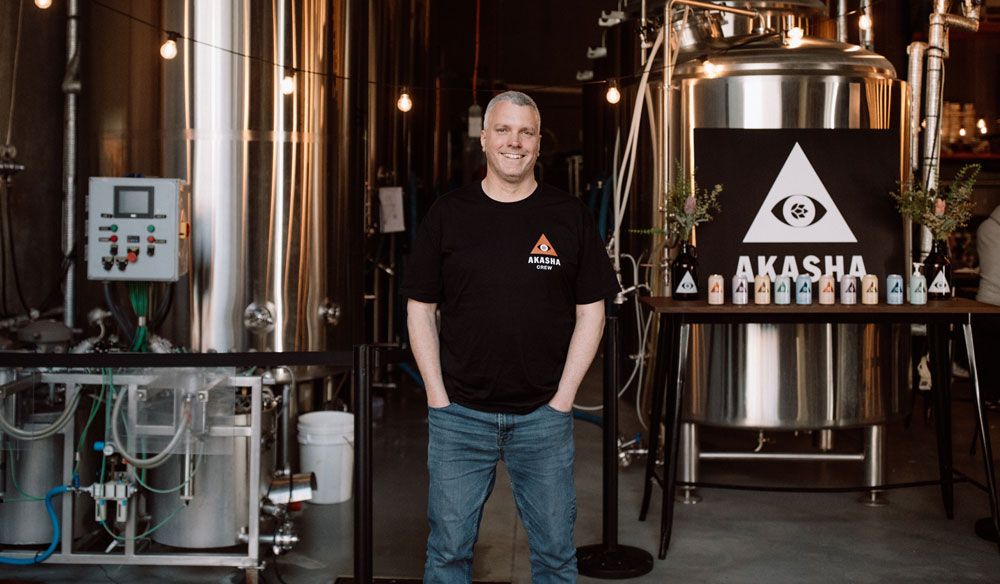
Was Korben inspired by any beer in particular?
All of my beers are inspired by Russian River, there’s no two ways about that! Also, the hop profiles of some of the bigger Sierra Nevada IPAs, I love those beers.
We based a lot of our process on Russian River: the types of hops we’re using, how we use them, fermentation profiles, pressure during fermentation, all that kind of stuff.
So has Korben changed much since 2015?
How we go about making the beer hasn’t changed dramatically but what has changed in the last five and a half years is the quality of the ingredients. The hops we’ve been getting from the US have gotten better every year. The hops we got direct from the Yakima Valley for the first release this year were just amazing. What we’re getting now compared to what we had five years ago is really chalk and cheese. Korben is undoubtedly a much better beer than it was purely because of the ingredients.
We have tried to change certain things but we always end up going back to the way we used to do it. We’ve tried hop re-circulation and played with modern hop derivatives but they just haven’t given us the results we were looking for. We did a 100 percent Cryo-hopped beer that was clean and pure but, you know… shit? We use T90 pellet hops for all our beers now because they just give us that little bit of earthiness or dirtiness or whatever it is, because we like what that gives to the beer.
Is there any aspect of Korben that you are particularly proud of?
Balance, definitely. It’s so important to us here that, no matter what we’ve brewed, if it’s a 12 percent IPA, Korben or an XPA it must be balanced. It’s definitely the number one thing we’re proud of with this beer.
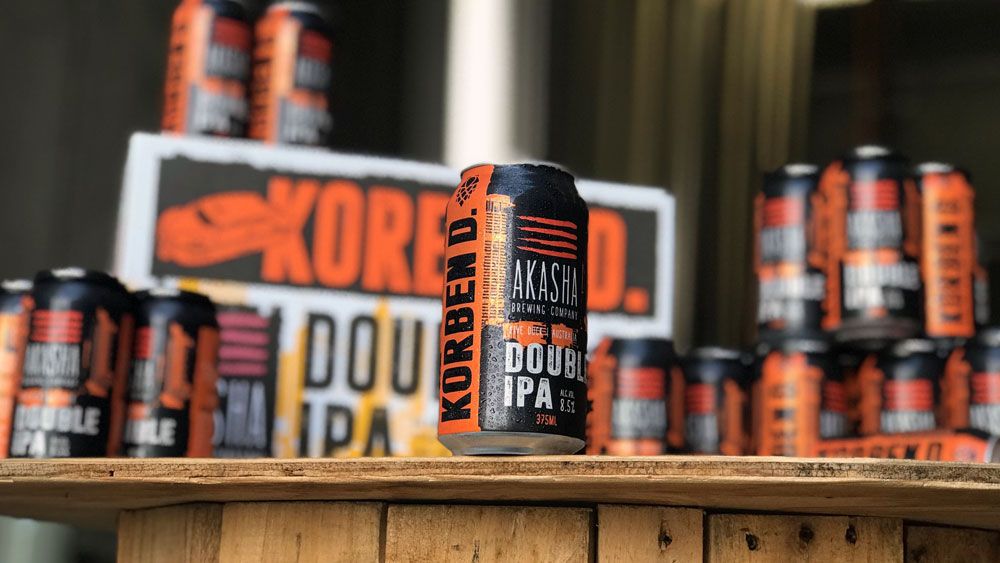
Why do you think a big West Coast IPA like Korben has not only endured in the changing tastes of the last five or so years but is now more popular than ever?
Apart from what we’ve already talked about in terms of quality and balance, I think a lot comes down to the two schooner rule. Could you, or would you drink two schooners of whatever beer is in front of you?
Five to ten years ago, a lot of brewers were trying to get West Coast IPAs as bitter as they could and they went a bit too far with it to the point that the bitterness was completely detracting from the flavour of the beer.
I think we’re already doing the same with hazies now too. We’re starting to see too much lactose and body and other qualities that detract from having a drinkable beer. Even with the hazies we brew, we’ll put one on and they’ll be immensely popular but they’ll have one then go back to a West Coast IPA. It’s familiar, it’s drinkable and it’s dry.
West Coast IPAs are not as bitter as they used to be, they’re very approachable, they’re balanced and, you know, they’re just fucking good beers.
Have you had any memorable moments of people trying Korben for the first time?
It happens almost every day! Anyone who has a taproom will be able to tell you about that experience.
I don’t really like to look at social media for reactions and reviews. It’s not very nice out there obviously (laughs). I gave all that up years ago.
The beauty of having a taproom in an area like this is that we are always getting new people in here and we can see, firsthand, their reactions. Often they’ve never even had an IPA or DIPA before and telling them it’s a 8.5 percent hoppy beer they’re pretty intimidated. But, one on one, you can convince them to try it. And just the look on their face at that first try when they’re getting all that flavour, they’re loving it! It never gets old.
And it’s not just the punters; when we first tasted this batch of Korben out of the brite tank, the brewers were bloody running around, dancing and carrying on. Each new batch is better than the last, and even though we’ve been brewing Korben for a long time now, that first taste of every batch is still exciting for the entire team.
The most recent batch of Korben was released at the end of February so if you can find some in the fridge at your favourite local bottleshop it should still be tasting pretty spectacular.
You can find other articles in this series here. If there are beers you'd love to see featured in The Story Of... drop us a line.




